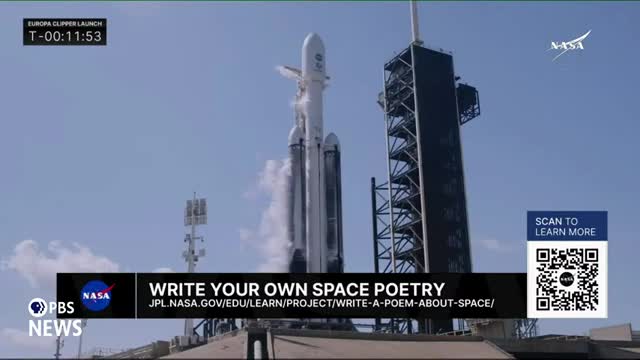Europa Clipper launches to uncover secrets of Jupiter's moon
This article was created by AI summarizing key points discussed. AI makes mistakes, so for full details and context, please refer to the video of the full meeting. Please report any errors so we can fix them. Report an error »

NASA's Europa Clipper mission successfully launched aboard SpaceX's Falcon Heavy rocket, marking a significant milestone in the quest to explore Jupiter's icy moon, Europa. The launch took place at 12:06 PM ET, with the spacecraft designed to investigate the potential habitability of Europa, which is believed to harbor a vast ocean beneath its icy crust.
During the pre-launch discussions, scientists emphasized that while the Europa Clipper is not a life detection mission, it aims to characterize the moon's environment and gather crucial data about its geology. Images captured during the mission will provide insights into the surface features of Europa, including its fractures and ridges, which suggest geological activity and the presence of water beneath the ice.
Europa, the fourth largest moon of Jupiter, has a surface temperature ranging from -210 to -370 degrees Fahrenheit and is covered by a thick ice shell estimated to be 10 to 15 miles deep. The mission is particularly exciting for the astrobiology community, as Europa is considered one of the most promising locations in our solar system for finding conditions suitable for life.
As the countdown progressed, the launch team monitored various systems, resolving a temperature anomaly on the second stage before confirming a go for launch. The Falcon Heavy's two side boosters, previously used in other missions, successfully separated after providing the necessary thrust to propel the spacecraft into its trajectory.
With the Europa Clipper now on its way, scientists and enthusiasts alike are eager to uncover the mysteries of this intriguing moon, which could hold more than twice the volume of Earth's oceans beneath its icy surface. The mission is expected to provide valuable data that could enhance our understanding of potential life beyond Earth.
During the pre-launch discussions, scientists emphasized that while the Europa Clipper is not a life detection mission, it aims to characterize the moon's environment and gather crucial data about its geology. Images captured during the mission will provide insights into the surface features of Europa, including its fractures and ridges, which suggest geological activity and the presence of water beneath the ice.
Europa, the fourth largest moon of Jupiter, has a surface temperature ranging from -210 to -370 degrees Fahrenheit and is covered by a thick ice shell estimated to be 10 to 15 miles deep. The mission is particularly exciting for the astrobiology community, as Europa is considered one of the most promising locations in our solar system for finding conditions suitable for life.
As the countdown progressed, the launch team monitored various systems, resolving a temperature anomaly on the second stage before confirming a go for launch. The Falcon Heavy's two side boosters, previously used in other missions, successfully separated after providing the necessary thrust to propel the spacecraft into its trajectory.
With the Europa Clipper now on its way, scientists and enthusiasts alike are eager to uncover the mysteries of this intriguing moon, which could hold more than twice the volume of Earth's oceans beneath its icy surface. The mission is expected to provide valuable data that could enhance our understanding of potential life beyond Earth.
View full meeting
This article is based on a recent meeting—watch the full video and explore the complete transcript for deeper insights into the discussion.
View full meeting